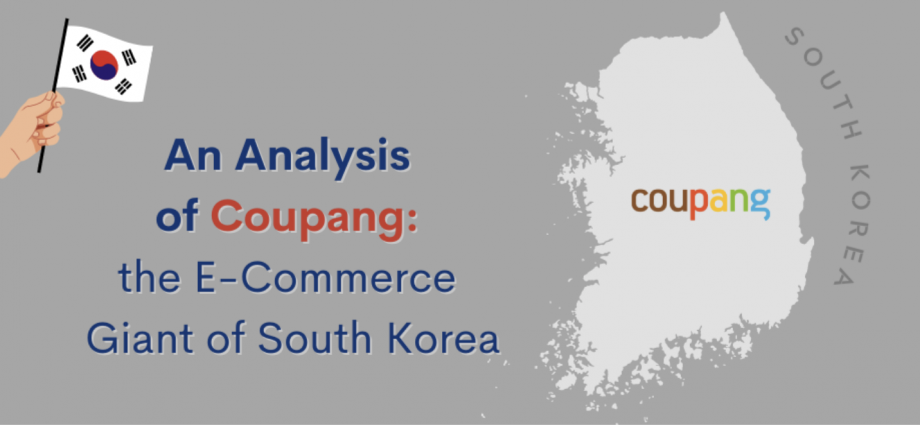Author: Aditi Somayajula, Graphics: Nina Tagliabue
The BRB Bottomline
In 2021, positive investor sentiment suggested that the South Korean e-commerce giant Coupang had potential to parallel the success of Amazon or the Alibaba Group. However, today, without a sustainable profitability model to rely on, Coupang’s long-term success is uncertain to investors.
Last March, South Korean e-commerce giant Coupang debuted on the New York Stock Exchange in what would be the largest foreign IPO of the year. Early positive investor sentiment was founded on a bullish outlook for the company, contributing to a massive initial market capitalization that exceeded $100 billion. Investors speculated that, in time, Coupang would come to parallel the success of Amazon or the Alibaba Group.
But one year later, that optimistic forecast no longer seems to be the consensus. Since Coupang’s IPO, its individual shares have fallen by nearly 50%. In part, that decline can be explained by the duality of the business models of e-commerce giants — although there exists a wealth of opportunities in e-commerce, the potential of such companies must be reconciled with the challenges of developing a sustainable profitability model. This trade-off is the case for Coupang, whose long-term success depends considerably on whether the company can develop a profit engine.
Enter Coupang
Based in Seoul, Coupang is an e-commerce marketplace that operates via end-to-end fulfillment services, same-day delivery networks, and advertising platforms. Since its founding in 2010, the company has been committed to streamlining various friction points of e-commerce companies, such as the common lack of robust infrastructure and delivery logistics. Over the past decade, Coupang’s solution to this friction point has been the rapid development of distribution centers across South Korea. Their solution has also appeared to double as a domestic growth strategy — today, nearly 70% of South Koreans live within seven miles of a distribution center, enabling same-day delivery and returns for millions of consumers.
The ‘Amazon of South Korea’?
Although Coupang has grown considerably since its founding, its distribution expansion strategy that centers on aggressive reinvestment has led it to run at a loss for the past several financial quarters. Some analysts claim that Coupang has borrowed from the playbook of Amazon, which sought to refine its business model and become a market leader before turning a profit. But although the story of Amazon is a clear indication of the potential of e-commerce, its business model does not necessarily translate smoothly to the case of Coupang.
Unlike Coupang, the primary profit engine of Amazon is not its online marketplace but rather its cloud computing platform Amazon Web Services (AWS). That, in part, justified Amazon’s growth strategy as its web services sector generated enough capital to sustain its considerable spending. In contrast, Coupang does not have a comparable profitability model. And as competitors enter the market, each attempting to optimize aspects of e-commerce in South Korea, the novelty of Coupang’s business appears to be threatened. Over the past year, investors seem to have taken notice of Coupang’s notable competition, resulting in a share price that has nearly halved since the company’s IPO.
Looking Ahead
So far, positive perception towards Coupang appears to be undergirded by the high demand for its goods and services. By some metrics, such as the dollar retention rate, the company even outperforms Amazon. And as the number of broadband connections in Asia continues to explode, demand for e-commerce ecosystems will inevitably follow.
With an economy growing at its fastest pace in 11 years, South Korea is undoubtedly a promising market for the digital transformation of retail — and, in the coming years, we will likely see e-commerce companies grow to fit the role of the next Amazon or Alibaba of the region. Observing how Coupang grows to meet the need for a profitability model will allow us to better understand the road ahead for the company. And in the big picture, the case of Coupang can come to serve as our analysis and expectation for similar companies in the space.
Take-Home Points
- Last March, South Korean e-commerce giant Coupang debuted on the New York Stock Exchange in what would be the largest foreign IPO of the year.
- One year later, investor sentiment has fallen as, partly due to aggressive spending in reinvestments, the company has run at a loss for the past several financial quarters.
- Although the South Korean market has a wealth of opportunity, the potential of Coupang must be reconciled with its apparent lack of a sustainable profitability model.
- Observing how Coupang strives to develop a profitability model will likely be the largest determinant of its long-term success.

